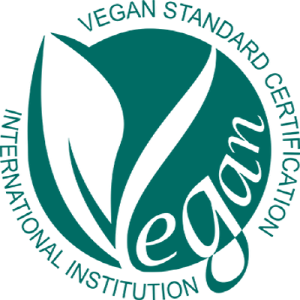#Vegan #Vegetarian #Food #Restaurant #South Korea
I decided to write this content since there are so many wrong information about the Vegan food in Korea.
I mean, of course, all of the menu listed online can be made in a Vegan way, but normally, as a meat lover nation, we don’t do that. We don’t make foods in an ultimate Vegan way. We’re using anchovy broth or beef broth in usual in almost every kinds of food.
So please, Vegans in the world!
Please make sure it’s vegan food every time you order in Korea. But here I am to help you lessen your burden.
Tips for ordering
Korean food is often prepared with meat and fish broth and many restaurants don’t have separate menus prepared for vegetarians. So if you are a vegetarian, it’s best to clearly inform the server about your diet in advance and provide detailed instructions on ingredients that need to be excluded. Sometimes, language barriers may hinder communication so it’s helpful to prepare Korean phrases such as “I am a vegetarian” or “I cannot eat meat, eggs, and seafood” in advance using a translator.
Vegetarian Menu
Below list of foods are basically vegetarian, but you’d better ask the chef/ the waiter not to put any meats or sea food in your plate.
- Bi Bim Bab (=Mixed salad & rice with sweet chili pepper paste)

2. Kimbab
Especially, KiTo Kimbab
3. Tteokbokki
4. Korean pancakes
Various kinds.
I recommend <Potato pancake> and <Kim chi pancake>.
Bin-dae-tteok which is made of grinded green beans is also a good choice.
5. Kimchi fried rice
6. Soft tofu stew
Soft tofu stew, in Korean called sundubu jjigae, is a bit spicy stew with vegetables, kimchi, and tofu, served with bowl of rice. There are ways to prepare this stew with pork or seafood as well and that’s why you should be careful while ordering to pick the correct one, or ask the staff,
7. Nang-Myun (Cold Noodles with Dong-chi-mi soup base)
*You need to check the base of the soup, since some of its kind are made of beef soup / anchovy soup and etc.
This dish consists of clear cold broth (with actual ice in it!) with chewy noodles made of buckwheat or sweet potatoes. This is very unusual dish for non-Korean people and very common for Koreans, but the taste is very good! This food is not surprising just because of its temperature but also before you start eating you must cut the noodles with scissors!
8. Kong-Guk-Su ((noodles in cold soybean broth)
This is a popular summer menu that adds noodles to cold soup made of ground beans, and is a suitable dish for vegetarians. Take note that eggs may be placed on top as a garnish.
9. Muk (Jelly textured Korean devil’s tongue)
Muk refers to a jelly-type food ingredient that is made from acorn, buckwheat, or mung bean starch. It is usually served as is with a dipping sauce or as a salad after it’s been mixed with other fresh vegetables and seasoned with soy sauce to taste. Dotori muk muchim (acorn jelly salad) is the most common muk dish, regarded for its subtle spiciness and the incorporation of crunchy vegetables.
10. Du-en-jang-guk (Soybean paste soup)
Vegetarian Restaurant
Here is the recommendation where I visited and tasted more than okay.
1. An-Sik
2. Jum Jum Jum Jum Jum Jum
I recently came across a place that truly embodied the philosophy I had always dreamed of. ‘Jeom Jeom Jeom Jeom Jeom Jeom,’ a vegan Korean restaurant, offers a rare sense of tranquility amidst the hustle and bustle of Seoul. The innovative interior, featuring cube-shaped recycled aluminum, adds to its unique charm. While many well-known vegan restaurants typically serve Western dishes such as pasta, pizza, and fried foods, ‘Jeom Jeom Jeom Jeom Jeom Jeom’ stands out with its Korean-inspired menu.
<Recommend Menu>
- ‘Ogwajeong Carrot and Vegetable Stir-fried Noodles’ : multi-roasted carrots, noodles, and stir-fried vegetables with basil pesto.
- ‘Grilled Radish Seed Bowl,’ which combines sweetly cooked radish, crunchy hemp seeds, and mustard sauce.
There is often a misconception that vegan cuisine, limited by its ingredients, lacks flavor. However, this restaurant dispels that myth, offering a delightful experience of sophisticated vegetarian cooking.
The menu is renewed every season – Spring, Summer, Fall, Winter – so you can find the different joy of finding the time and life.
3. Bal-woo-gong-yang
Balwoogongyang, which means ‘monk’s daily meal’
temple food in Buddhism
healthy, less strong
Vegan Certification
One of the easiest way to check if a product is vegan while shopping in Korea is to look for a certified vegan logo. Several vegan certification institutions worldwide issue such logos to inform consumers that the product does not contain any animal products or byproducts and has not been tested on animals. Products with these certified vegan logos can be assured to have been assessed and verified by a vegan certification institution.
Vegan Standard Certification International Institution

Korea Agency of Vegan Certification and Services

Vegan Society

V-Label International

EVE Vegan

Cruelty Free International

✅ When you want to check the vegetarian specialized restaurant, Happy Cow is also the best choice.
Useful Korean words for Vegan life
Helpful Phrases to Know
고기 있어요? (Gogi Issuh-yoh)= Is there meat?
___하나 주세요? (___hana juseyo) = Can I have one of ____ please?
고기는 빼주세요 (gogi-neun pay juseyo)=Without meat please.
저는 고기를 못 먹어요 (jeonen gogi-uel mote moe-gayo) = I don’t eat meat.
저는 채식주의자 예요 (Jeoneun jishig-joowuija yeyo)= I am vegetarian.
Words to Recognize
고기(gogi)= meat
돼지고기 (dwaejigogi)= pork
햄 (haem) = ham
베이컨 (baeicon)= bacon
해물산/해물 (heymulsan)= seafood
비건 (Vegan)= Vegan
채식 (Chae-Sik)= Vegetarian
답글 남기기